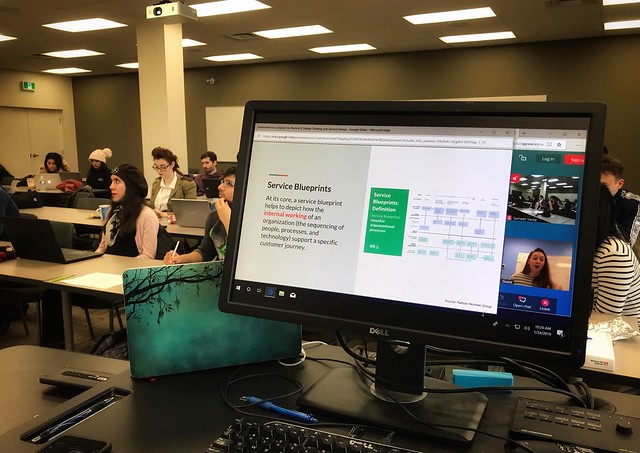Government in a Digital Era: Module 3
From January to April 2019, I’m teaching the “Government in a Digital Era” course as part of the Masters of Public Service program at the University of Waterloo.
I’ve had a few people ask me about the course—what we’re learning, what we’re reading, how the classes are going—so I thought I’d share some information about each module that we cover in the class. Today, I’m sharing the course overview from our third module, as well as a link to some of the reflections that the students have done. I’m also sharing what bowtie I wear to class every week because, well, why not?
Module 3: Design Thinking and Service Design
The process of creating policy and programs is inherently a design process. In this module, we will examine how design thinking and systems design affects the creation of policy in a digital era, and how the notion of service design changes the way we deliver services to citizens, communities, and businesses.
In the first part of the module, we will explore design thinking and systems design as concepts: we will understand how the notion of policy and program “design” is different from policy analysis, and how this distinction changes the way we make and evaluate policy.
In the second part of the module, we will dive further into service design as a methodology, as well as examine the importance of agility, design sprints, iteration, and reflection in the digital service delivery model.
Guest Lecture: Katherine Benjamin, Vice President of Service Design, Ayogo Health
Learning Outcomes:
- Understand the concepts of design thinking, systems design, service design, Agile, and other related methodologies.
- Gain awareness of the tools, techniques, and practices that allow public service to engage in user-focused design for policy and services.
- Critically examine the current policy-making and service delivery context and determine how design will alter the way these processes are currently done.
Activity:
The university has identified that greater access to faculty and instructional staff is correlated to an increase in undergraduate student success. They have tasked your team to come up with a service, policy, program, or other kind of solution to help undergrads get more access to faculty, while being aware of all the current and pressing constraints on students and teachers.
Using the service design process—empathize, define, ideate, prototype, test—propose a solution to the university that addresses their challenge to you. Use the Design Thinking Bootleg to help you guide the products you will create during this activity.
Resources and Reading:
- All change is system change, Catherine Howe
- What is Service Design A tale of two coffee shops, Daniela Morales
- Asking “why”?, Erika Hall
- Most of government is mostly service design most of the time, Matt Edgar
- What digital and policy can learn from each other, Paul Maltby
- Social Justice-Oriented Interaction Design, Lynn Dombrowski, Ellie Harmon, and Sarah Fox
- Prototyping and the new spirit of policy-making, Lucy Kimbell and Jocelyn Bailey
- Digital transformation in government: Lessons for digital health?, Katherine Benjamin and Henry Potts
- The twin faces of public service design, Amanda Clarke and Jonathan Craft
- Design Thinking is Kind of Like Syphilis — It’s Contagious and Rots Your Brains, Lee Vinsel
- Design Thinking Bootleg
- Instruction Slides
Student Reflections
At the start of the course, I asked students to share their reflections on each module, and encouraged them to share them publicly where they felt comfortable. A few of them took me up on the challenge:
- Quite a few students started using blogs and personal websites to upload their reflections: 1, 2, 3, 4, 5, 6, 7
- A couple of students continued to upload their reflections through video posts.
- Some students used Google Docs to share their thoughts.
- One student continued his pattern of sharing his reflections through Twitter threads.
- And of course, there was another episode of the class podcast!
I’ve encouraged more students to share their thoughts in the open, rather than simply uploading their files. Hopefully, more to come next week!
Bowtie of the Week (and other photos)
I wear a bowtie to class every week, so I thought I’d end this post with a snapshot of that bowtie, and any other snapshots from the class.


